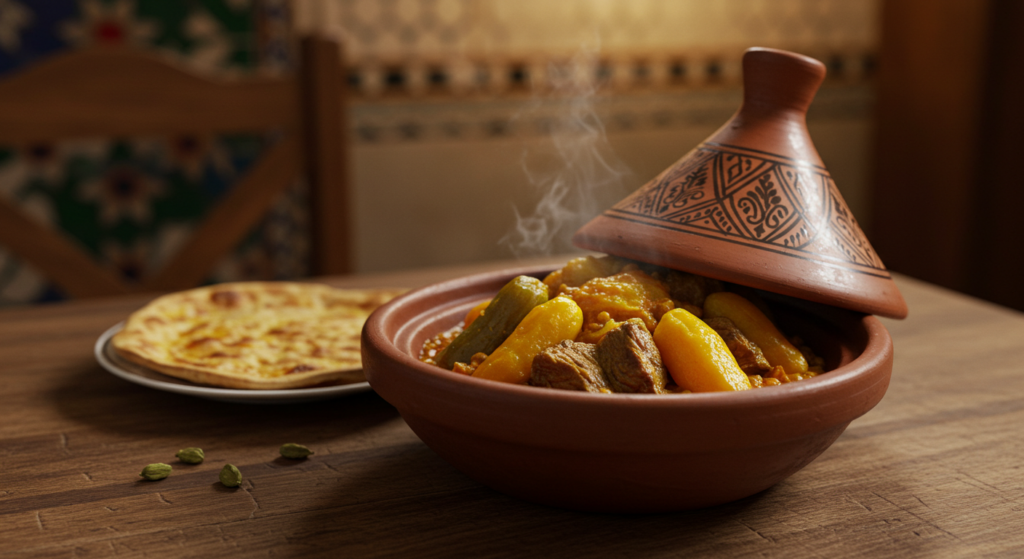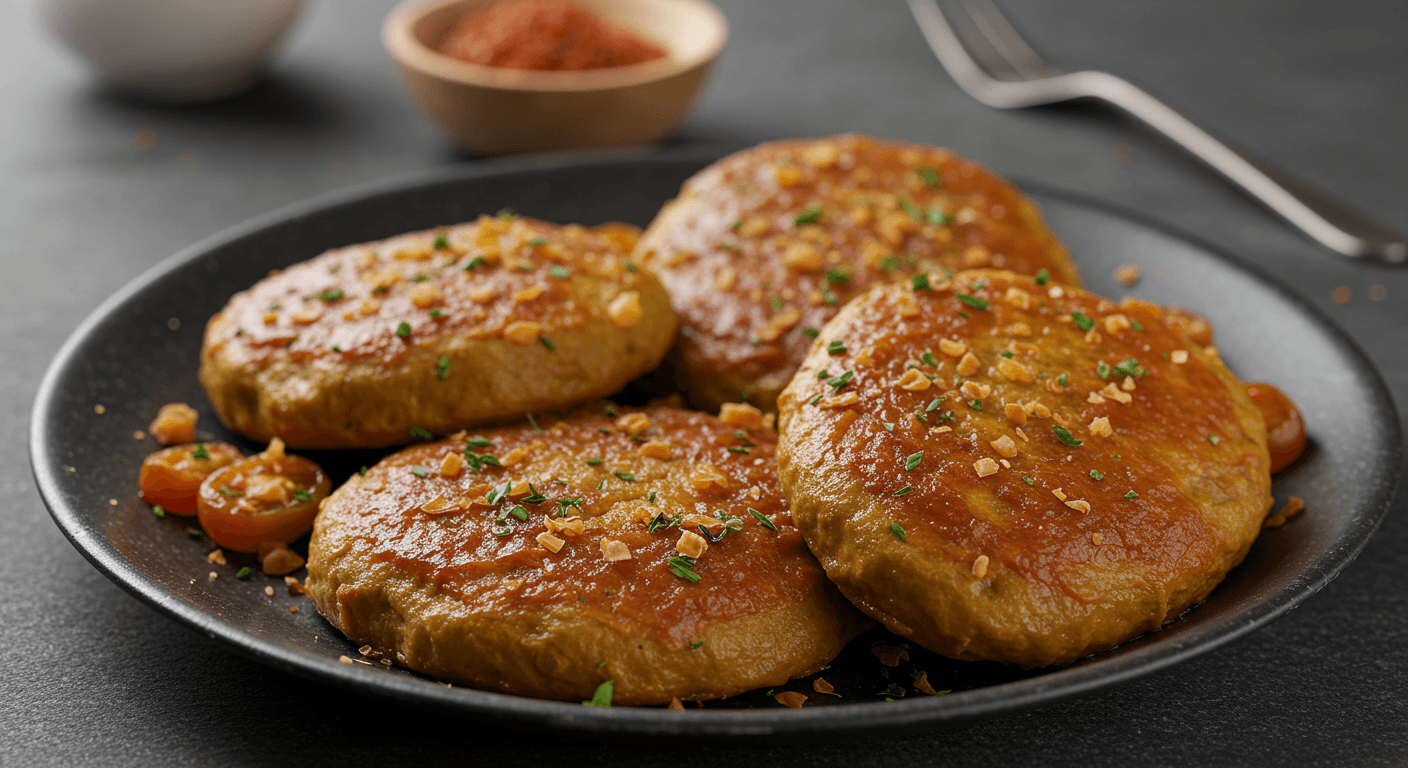
How to Master 5 Classic Moroccan Meals Recipes
Have you ever wondered why Moroccan food feels like a warm hug for your taste buds? Is it the bold spices, the slow-cooked stews, or the vibrant flavors that transport you straight to Marrakech? The truth is, Moroccan cuisine is all about balance—sweet and savory, spicy and mild, hearty and light. And guess what? You don’t need to be a professional chef to master it! In this blog post, we’ll show you how to create five classic moroccan meals recipes that are sure to impress your family and friends. Whether you’re a beginner or an experienced cook, these dishes are surprisingly easy to make and packed with flavor.

Overview: Why These Moroccan Meals Recipes Are Special
These five recipes are handpicked because they represent the heart of Moroccan cooking. From tagines to couscous, each dish showcases the unique blend of spices and techniques that define this cuisine. Here’s what you can expect:
- Time Requirement: Most recipes take between 30 minutes to 2 hours, depending on whether you’re using a slow cooker or stovetop.
- Difficulty Level: Beginner-friendly! With step-by-step instructions, even novice cooks will feel confident.
- Health Benefits: Moroccan meals often feature nutrient-rich ingredients like vegetables, lean proteins, and whole grains. Plus, spices like turmeric and cumin have anti-inflammatory properties!
Ready to dive in? Let’s get started!
Essential Ingredients: The Secret Behind Moroccan Flavors
Moroccan cuisine relies on a handful of key ingredients that bring its signature taste to life. Here’s what you’ll need:
- Spices:
- Cumin, coriander, cinnamon, turmeric, paprika, and saffron are staples.
- Why they matter: These spices add depth and warmth to every dish.
- Substitutions: If you don’t have saffron, use turmeric for color; swap fresh ginger for dried if needed.
- Proteins:
- Chicken, lamb, beef, or chickpeas (for vegetarian options).
- Why they matter: Proteins provide structure and satisfaction.
- Variations: Swap chicken for tofu or tempeh for plant-based alternatives.
- Fruits & Vegetables:
- Dried apricots, prunes, tomatoes, carrots, zucchini, and onions.
- Why they matter: Fruits add sweetness, while veggies offer texture and nutrition.
- Grains & Legumes:
- Couscous, bulgur, lentils, and chickpeas.
- Why they matter: They’re filling and versatile.
- Olive Oil & Preserved Lemons:
- Why they matter: Olive oil adds richness, while preserved lemons bring tangy brightness.
- Substitutions: Use regular lemon zest if preserved lemons aren’t available.
Step-by-Step Instructions: How to Prepare Each Recipe
Let’s break down the five classic moroccan meals recipes. We’ll guide you through each one with clear steps and helpful tips.
1. Chicken Tagine with Apricots
- Steps:
- Heat olive oil in a large pot. Brown chicken pieces seasoned with salt, pepper, and spices.
- Add chopped onions, garlic, and ginger. Sauté until soft.
- Stir in dried apricots, honey, and broth. Cover and simmer for 45 minutes.
- Garnish with toasted almonds before serving.
- Tips: Use low heat for tender meat and caramelized fruit.
2. Lamb Couscous with Seven Vegetables
- Steps:
- Cook couscous according to package instructions. Fluff with a fork.
- In a separate pot, braise lamb chunks with onions, garlic, and spices.
- Add carrots, zucchini, turnips, and other veggies. Simmer until tender.
- Serve couscous topped with the stew and a sprinkle of parsley.
- Tips: For extra flavor, toast the couscous lightly before adding water.
3. Harira Soup (Traditional Lentil Soup)
- Steps:
- Sauté onions, celery, and tomatoes in olive oil.
- Add lentils, chickpeas, and spices. Pour in vegetable or chicken broth.
- Simmer for 30 minutes, then stir in vermicelli noodles.
- Finish with fresh cilantro and a squeeze of lemon juice.
- Tips: Adjust seasoning after the soup thickens.
4. Kefta Mkaouara (Meatball Tagine)
- Steps:
- Mix ground beef or lamb with parsley, spices, and egg. Shape into small balls.
- Brown the meatballs in a skillet, then transfer to a tagine or pot.
- Add tomato sauce, eggs, and olives. Simmer gently.
- Serve hot with crusty bread.
- Tips: Crack eggs directly into the simmering sauce for a creamy finish.
5. Pastilla (Sweet-Savory Pigeon Pie)
- Steps:
- Shred cooked chicken or pigeon and mix with cinnamon, sugar, and almonds.
- Layer phyllo dough sheets, brushing each with melted butter.
- Fill with the chicken mixture, fold into a pie shape, and bake until golden.
- Dust with powdered sugar and cinnamon before serving.
- Tips: Substitute chicken for pigeon if unavailable.

Assembly: Building Your Dish Like a Pro
Now that you’ve prepared the components, let’s talk assembly:
- Layering Flavors: Start with base ingredients like grains or stews, then add toppings like nuts, herbs, or sauces.
- Presentation Tips: Use colorful garnishes like pomegranate seeds or mint leaves for visual appeal. Serve dishes in traditional tagines or bowls for authenticity.
Storage and Make-Ahead Tips
Leftovers? No problem! Here’s how to keep your moroccan meals recipes fresh:
- Refrigeration: Store soups and stews in airtight containers for up to 4 days.
- Freezing: Freeze portions of tagines or couscous for up to 3 months. Reheat gently on the stovetop.
- Make-Ahead Ideas: Prep spice blends or chop veggies ahead of time to save effort.
Recipe Variations: Get Creative!
Feel free to experiment with these twists:
- Swap meats for plant-based proteins like chickpeas or mushrooms.
- Add seasonal produce like butternut squash or spinach.
- Experiment with different spice combinations for personalized flair.
Conclusion: Dive Into the World of Moroccan Cuisine
Congratulations—you now know how to master five classic moroccan meals recipes! These dishes are not only delicious but also healthy, quick to prepare, and endlessly versatile. So grab your apron, gather your ingredients, and start cooking. Who knows? You might just discover your new favorite meal!
FAQs: Everything You Need to Know
Q: Are these recipes healthy?
A: Absolutely! Moroccan meals are rich in vegetables, lean proteins, and whole grains. Many spices also offer health benefits.
Q: Can I make these recipes gluten-free?
A: Yes! Replace couscous with quinoa or rice, and use gluten-free phyllo dough for pastilla.
Q: How long do leftovers last?
A: Most dishes stay fresh in the fridge for 3-4 days and freeze well for longer storage.
Q: Do I need special equipment?
A: Not necessarily. While a tagine pot is ideal, any heavy-bottomed pot works fine.
Happy cooking!


